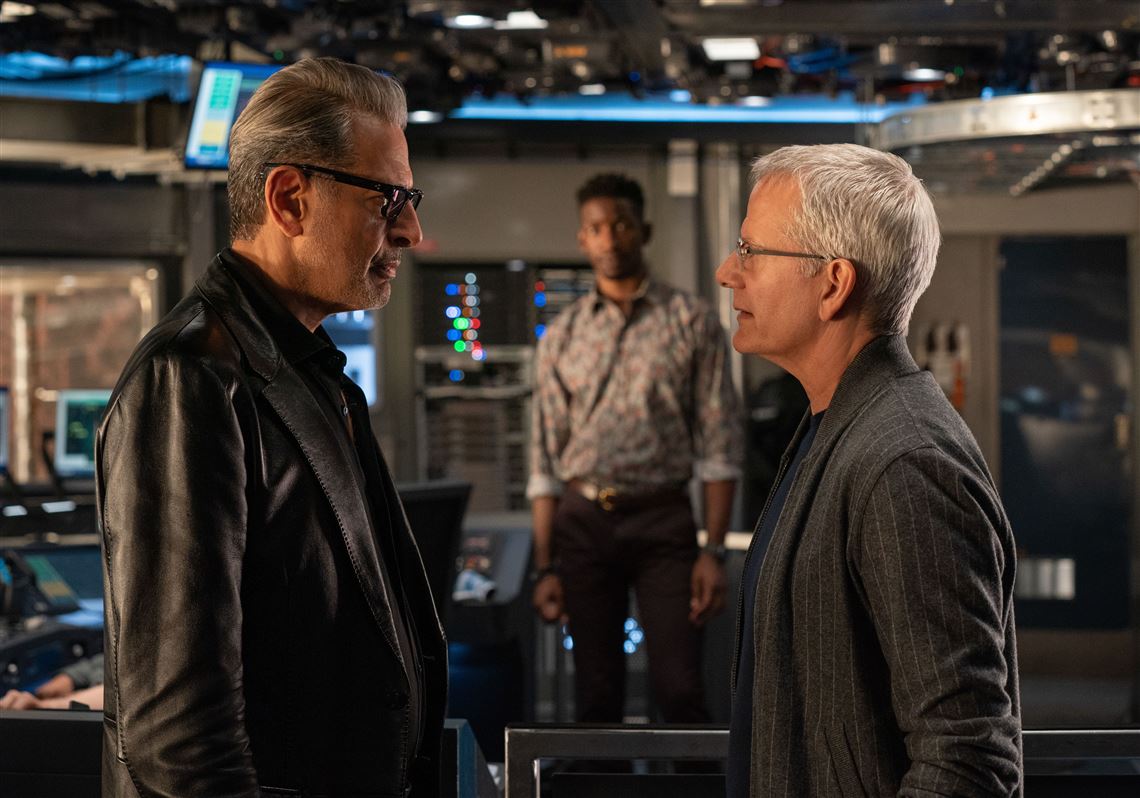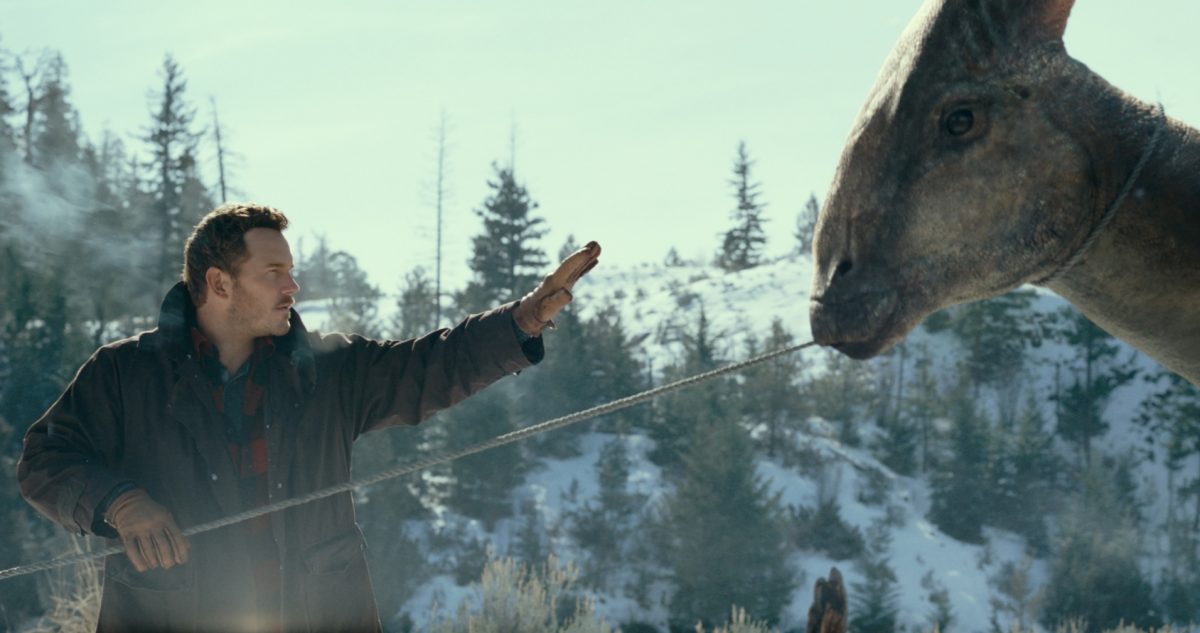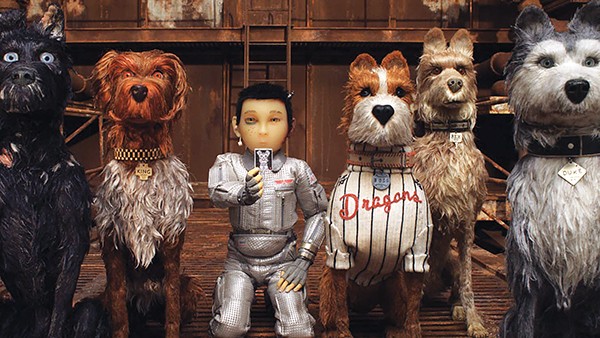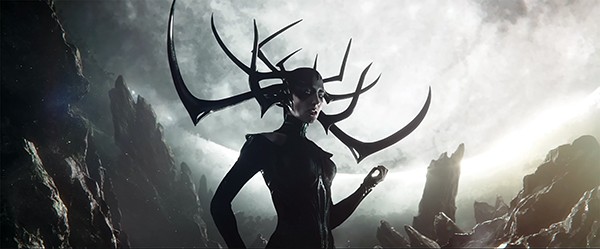How many ways can you screw up a dinosaur movie? It seems like a slam dunk. The people are coming for the dinosaurs, so you give them dinosaurs. When you’re not doing that, just point your camera at Jeff Goldblum — because if you’re making a movie about dinosaurs, I assume you’ve paid your Goldblum money.
In attempting a Star Trek: Generations move by uniting the old and new casts of a legacy franchise, Jurassic World: Dominion inadvertently exposes the biggest flaw of the Jurassic Park reboot trilogy: The lack of Jeff Goldblum. The new film’s greatest accomplishment is the completion of Chris Pratt’s quest to render his character Owen Grady completely devoid of personality. The former Navy Seal turned velociraptor whisperer is just there to be good at things like riding motorcycles and wrangling wild theropods, not to feel any pesky emotions. His sole move is to straight-arm dinosaurs into compliance, which he does eight times, by my count, in Dominion. Since appearing in 2018’s Jurassic World: Fallen Kingdom, Bryce Dallas Howard has come into her own directing career, helming episodes of The Mandalorian, so her performance as former Jurassic Park manager turned dino-rights activist Claire Dearing is predictably checked-out.

When Dominion begins, they’re living together in a cabin in rural Montana with Maisie Lockwood (Isabella Sermon), the clone of the daughter of OG Jurassic Park researcher Benjamin Lockwood. Instead of instantly dying from the Anthropocine world’s onslaught of pollution and disease, the dinosaurs who escaped from the exploding volcano on Isla Nublar have spread across the planet. This sounds like the basis for a good story. Imagine dinosaurs tearing a swath through the modern world, while our heroes, led by Jeff Goldblum, tries to find a solution that preserves both humankind and dino-kind. It’s the proverbial un-screwable pooch.
Life, in the person of writer/director Colin Trevorrow, finds a way. It turns out that Dr. Ellie Sattler (Laura Dern) has been spending the years since her 1993 visit to Jurassic Park studying the effects of genetic engineering on the ecology. She’s hot on the trail of a mysterious new species of giant locust that have been bioengineered to eat everything not produced by megacorp Biosyn. This will cause a worldwide famine if she and her old palentologist flame Dr. Alan Grant (Sam Neill, remarkably well preserved) can’t find proof of the plan. Lucky for them (and us) Dr. Ian Malcolm (Jeff freakin’ Goldblum) has already infiltrated Biosyn by gaining the trust of its founder Dr. Lewis Dodgson (Campbell Scott, in a Shatnerian performance). Even though dinos are now roaming wild through the woods and plains of the world, Biosyn has gathered a collection of the creatures into a large, protected space — a kind of Jurassic park, if you will — through which our ever-growing collection of heroes will have to navigate in order to save a kidnapped clone, a baby velociraptor, and also the world’s food supply.

Maybe a more skilled filmmaker would be able to successfully juggle three competing storylines, but the truth is, a skilled filmmaker would know better than to try. The giant locust attack seems to be an attempt at a climate change allegory, which is weird choice for a story that features a world overrun by already allegorical dinosaurs. Were the filmmakers under the impression that we’re begging for a stealth remake of Beginning of the End, the 1957 giant locust movie skewered by Mystery Science Theater 3000? I thought we were here for dinosaurs.
In fairness, there is some crunchy dino-action. The second act features a solid Spielbergian set piece, with trained velociraptor assassins under the command of a smuggler named Santos (Dichen Lachman) chasing a motorcycle-mounted Pratt through the streets of Malta. But even when Trevorrow manages to conjure a string of exciting images, the Adderall-addled script can’t sustain any momentum.

When things do perk up, it’s usually because of Jeff Goldblum. He effortlessly dominates the screen, delivering schtick with his trademark sly wink at the audience. I was reminded of the infamous story of when Michael Caine, another actor who was always the best thing in bad movies, was asked about appearing in another rock-bottom sequel of a great Steven Spielberg film, Jaws: The Revenge. “I haven’t seen it, and by all accounts, it is terrible,” he said. “But I have seen the house that it built, and it is terrific.”



